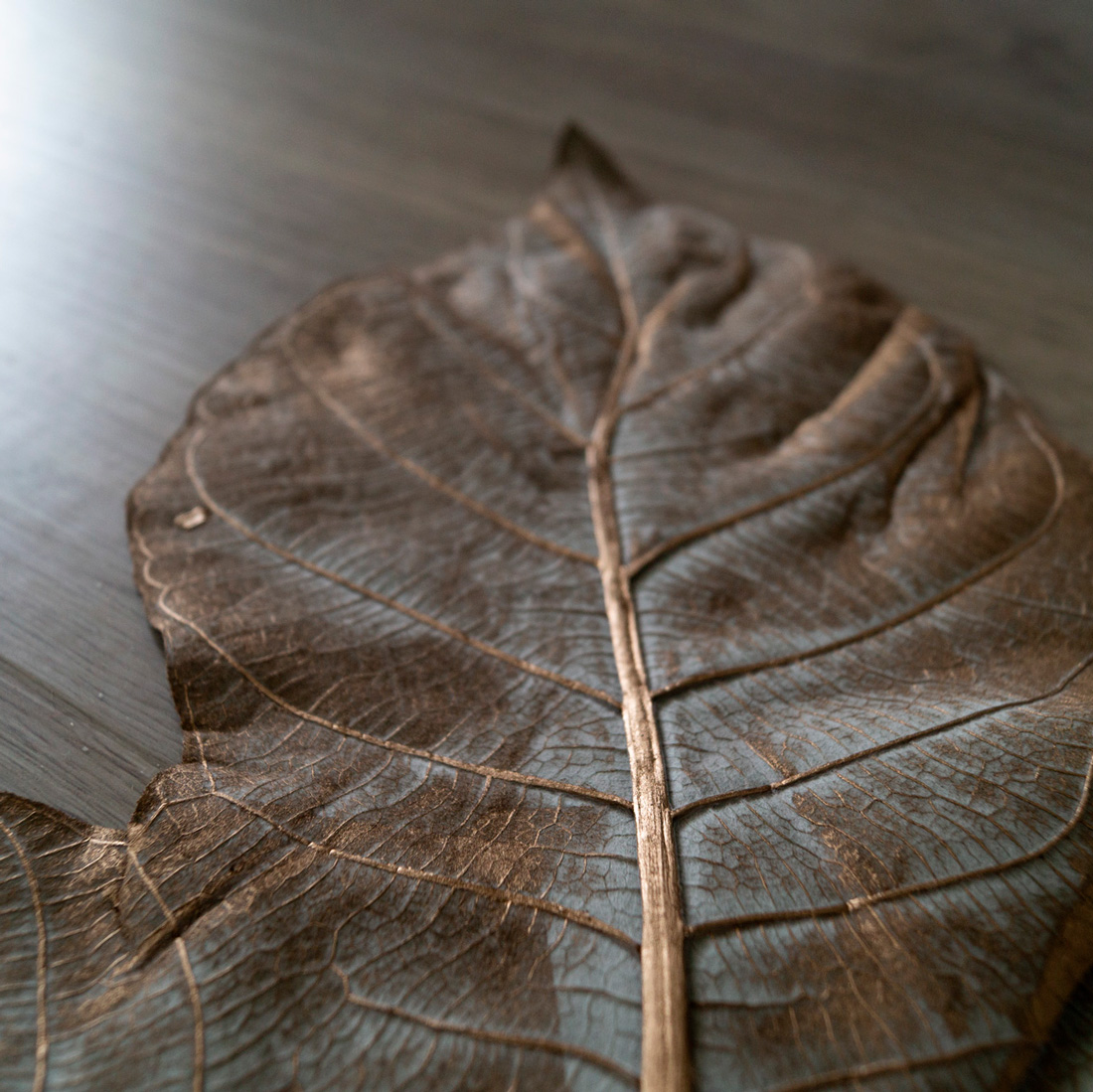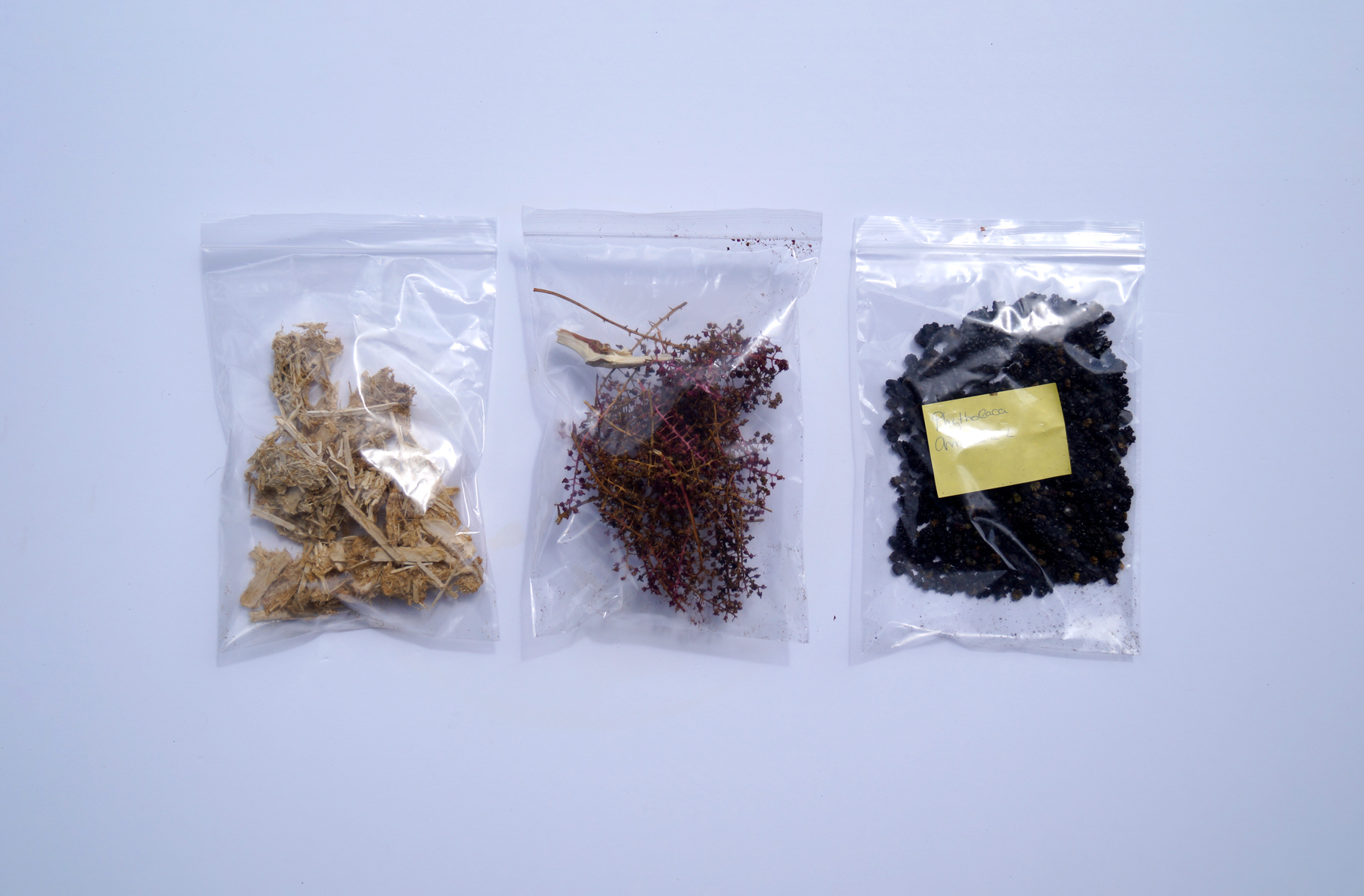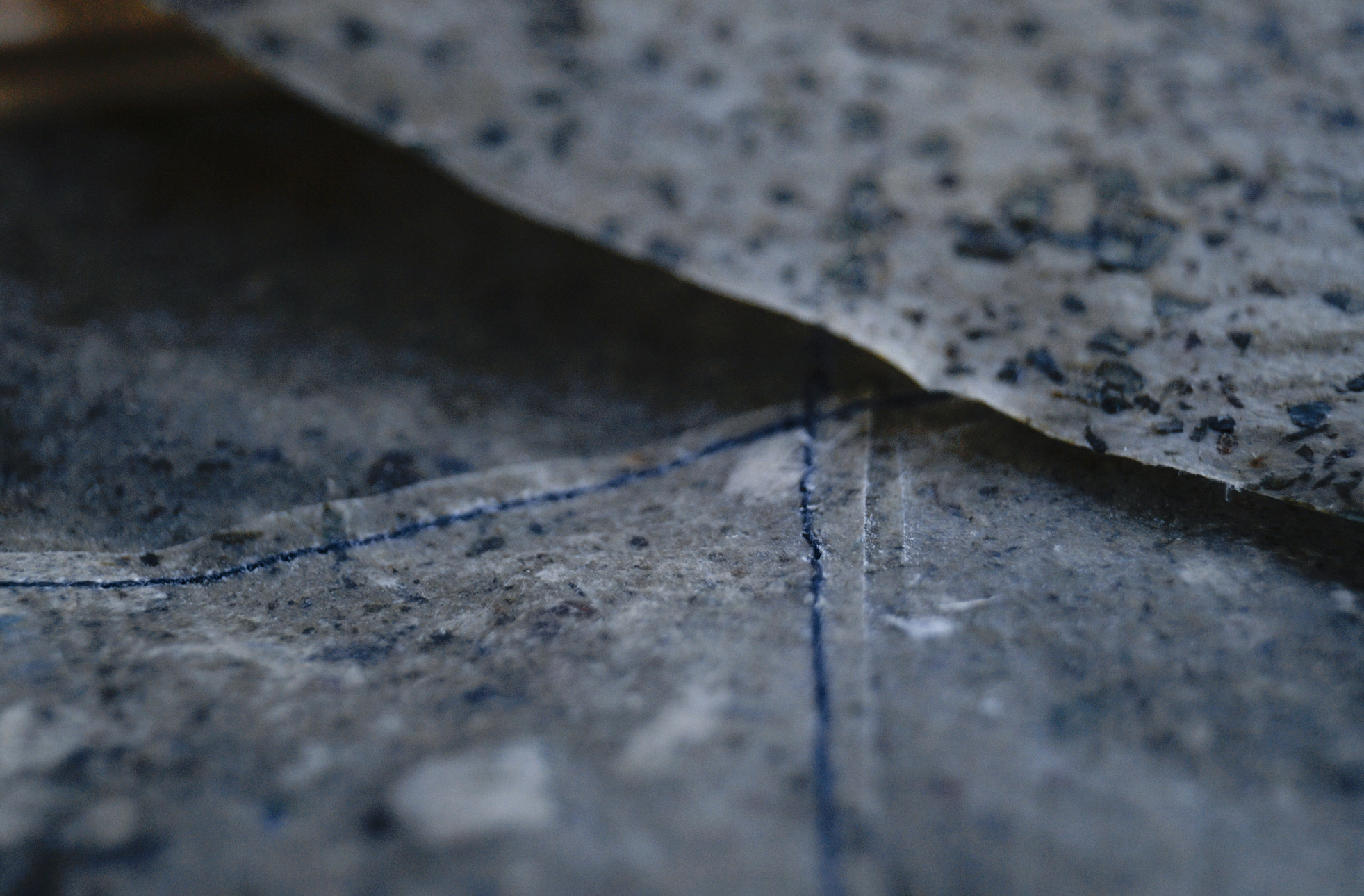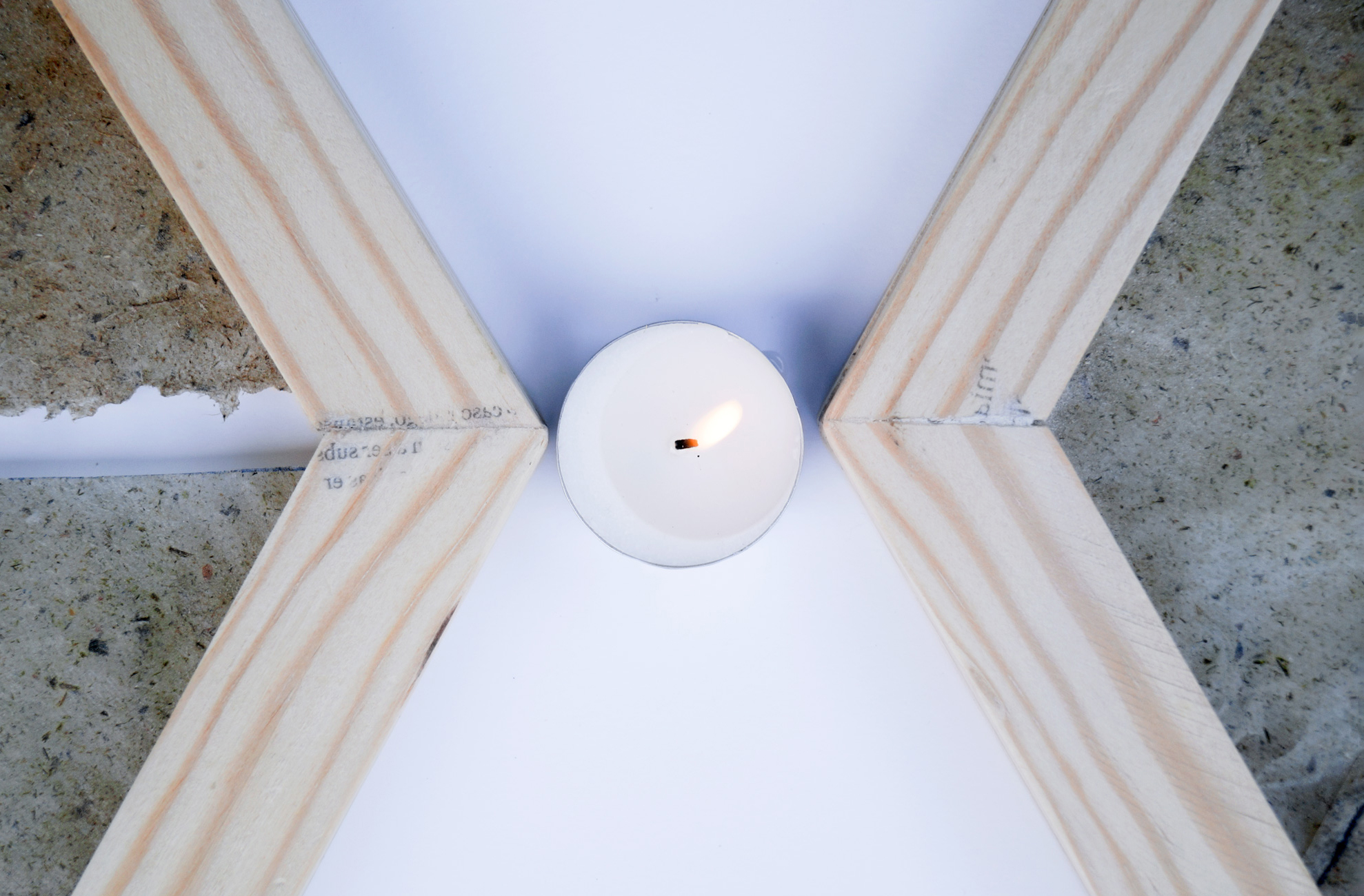Artistic research - practical research
Another research methodology, this time arguably the most creative.
The reproduction of natural textures and self-expression is sought through various
dynamics of artistic creation by means of direct printing, woodcut, painting, drawing and photography.
Elaboration and design of the graphic line and objects, as well as prototyping and material experimentation.
Creation & colors
Multi-tec creation
The object is presented as a link between being and nature. It is introduced into the intimate space, the closest space,
and it is there where the emotional value appears. Emotion in possession and fetishism towards creation is where these proposals take hold, generating a dependence
on the natural environment, through the object.
This ritual, artistic and everyday element vindicates the values of protection, respect and exaltation of the environment.
It is necessary to understand that a change must be made in the way of creating and consuming time and space. Slower, healthier, more natural.

"One of the first days of the month of October 1833, I was amusing myself on the lovely shores of the Lake of Como, in
Italy, taking sketches with Wollaston's Camera Lucida, or rather I should say, attempting to take them: but with the smallest
possible amount of success. For when the eye was removed from the prism—in which all looked beautiful—I found that the
faithless pencil had only left traces on the paper melancholy to behold.
After various fruitless attempts, I laid aside the instrument and came to the conclusion, that its use required a previous
knowledge of drawing, which unfortunately I did not possess. I then thought of trying again a method which I had tried many
years before. This method was, to take a Camera Obscura, and to throw the image of the objects on a piece of transparent tracing
paper laid on a pane of glass in the focus of the instrument. On this paper the objects are distinctly seen, and can be traced on it
with a pencil with some degree of accuracy, though not without much time and trouble.".
Fox Talbot, W. H. (1844). The pencil of nature (Vol. 30/03/11). KWS Publishers.
.jpg)
“A draughtsman can do no more than to delineate a part of what he sees, and whether he sees correctly what he delineates,
will at all times be a matter of doubt, especially where, as in natural history, accuracy is indispensable”
“To express such facts with the necessary accuracy, the art of a Talbot or a Daguerre, was insufficient, nor could they
be represented pictorially until nature-printing was brought to its present state of perfection.”
Moore, T., Bradbury, H., & Lindley, J. (1857). The ferns of Great Britain and Ireland. London: Publ. by Bradbury and Evans.
How did it works?
Reflecting nature
Biomimetics in graphic and hand-made product design
The main objective is, through graphic and structural biomimicry, to replicate and allude to natural elements in the design of prints and everyday objects. In this way, these objects are presented as a direct link between the user and the natural environment, integrating directly into everyday domestic life.
Sharing and ecosystem
The object, considered as a fetish, plays in our favour.
The emotional, sensitive and useful object.
By presenting art as part of everyday life and nature as an implicit necessity, the handmade object with
natural elements is presented as a common axis on which to pivot.
Graphic experimentation is a response to the constancy of non-organic forms in our environment.
More and more initiatives seek to convey warmth, home and care through the use of natural patterns, curved shapes and softness.
The aim is to go a little further. Replicating natural textures and elements, through a graphic and physical representation of these elements, mixing technological and creative disciplines.
By studying the history of botanical printmaking and illustration, it is possible to understand how the collaboration
between art and science has evolved since its beginnings.
By drawing from the same elements, many different results can be achieved, which can be adapted to the discipline that needs to make use of them. This is how botanical printing is presented as a graphic solution, an artistic and pictorial creation and, at the same time, a scientific resource of great interest.
By trying out new techniques and solutions we hope to achieve interesting results.
Machine & authors
Technical approachs to contemporary printmaking
Through parametrised methodological processes guided by the scientific method, the aim is to de-individualise the creative process, turning the machine into the category of creator or co-author of the work. In a questioning of the position of the artist for/with the scientific and artistic representation of the 21st century, the aim is to experiment with self-referential processes that speak of the past and future of the works.
.jpg)
"Mental or intellectual representation, at the crossroads of image and idea, is not primarily concerned with the copying of a thing, but with the ability to
present an object to a subject"
RUIZ DE SAMANIEGO, A. (2014). Eidos da imaxe. Grafias dos feitos e do pensamento. Universidade de Vigo, MARCO, Vigo.

Scientific-technologycal
research methodology
Finding a use in the world of art for plant waste from invasive species in Galicia. Method of handmade elaboration of a woven or pressed support with the selected species.

biomaterials
general project
Biomaterials and matter from the galician natural environment applied to design, printing and manufacturing everyday use objects

Theorical-conceptual
research methodology
Participatory ethnographic qualitative methodolgy with communities of artists/artisans from different cultures. The role of the creator. The boundaries between useful, ritual and art objects.
.jpg)
.jpg)
.jpg)
.jpg)
.jpg)
.jpg)
.jpg)
.jpg)
.jpg)
.jpg)
.jpg)
.jpg)
.jpg)
.jpg)
.jpg)
.jpg)
.jpg)
.jpg)
.jpg)
.jpg)
.jpg)
.jpg)
.jpg)
.jpg)
.jpg)
.jpg)
.jpg)
.jpg)
.jpg)